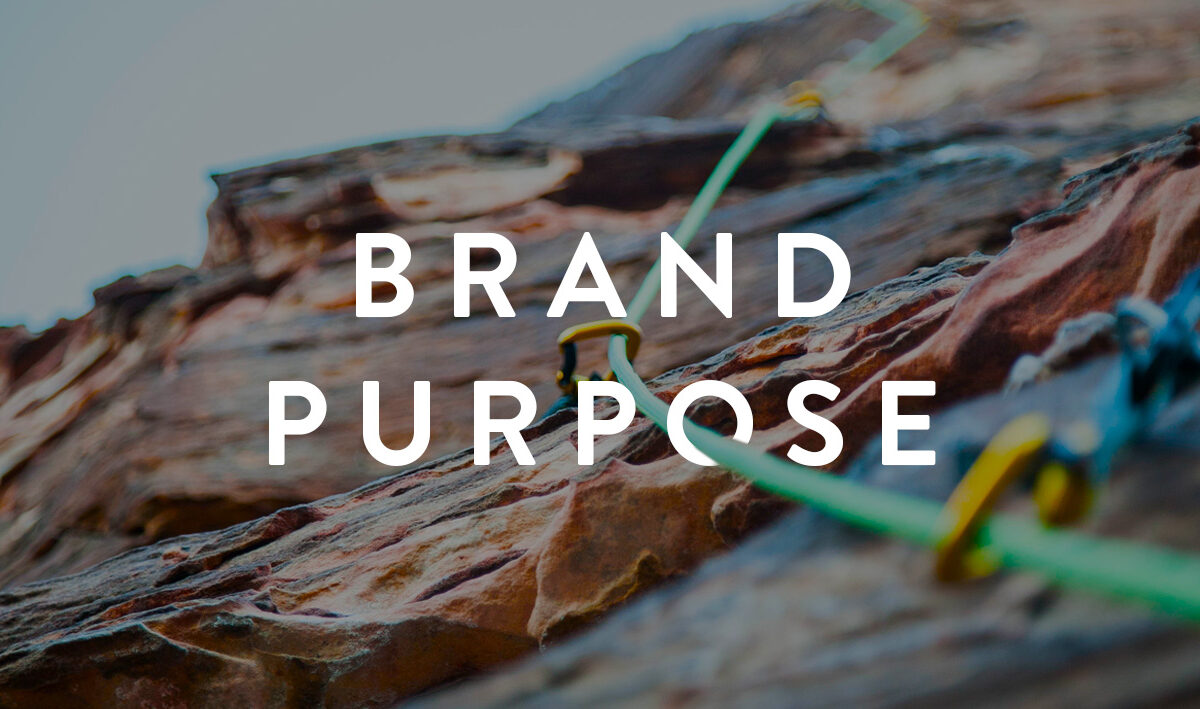A few years ago, we were working for a Japanese consumer electronics company whose major competitors included Fuji. At a workshop with the leadership team we asked what their brand purpose was – the reply was “F..k Fuji”.
Destroying or displacing your competitor is certainly one kind of purpose. Some managers can find it easier to motivate their people by making an enemy of the competition and giving people the objective to defeat them. It is a mindset that sees business as a war game and uses other military terms and strategies to achieve victory.
Kevin O’Leary, the Canadian businessman behind Shark Tank, said, “Business is war. I go out there, I want to kill the competitors. I want to make their lives miserable. I want to steal their market share. I want them to fear me.” There are numerous books on the theme of business as war, including adaptations of The Art of War by the ancient Chinese military strategist, Sun Tzu.
This approach works when it is easy to see who the enemy is: Pepsi versus Coca-Cola in the “rock and roller Cola wars”; IBM versus Apple in the 1980s; Sainsbury versus Tesco, or Nike versus Reebok. But in a world where competitors are coming from anywhere, where digital has transformed the ability of brands to nimbly and quickly forge new relationships with customers, where new categories and subcategories are being created and consumers are deciding on a daily basis, it seems that what they perceive as competing alternatives – this “battle of the brands” approach – is less relevant.
Moreover, it can seem absurd. The satirist PJ O’Rourke, in a brilliant article for Forbes, mocks the inherent nonsense of comparing war with business: “They have as much in common as a sucking chest wound and a lunch expense account.” He went on to write, “Good business produces what the best war can’t, mutual satisfaction – pleased customers, investors, employees or bosses. At the end of a war, they are in a grave. At the end of a business day, usually not.” The machismo surrounding the “business as war” analogy is also, we suspect, unappealing to at least half of the world’s population.
Of course, the “military style” objective does not need to be couched in such overtly aggressive language. Many organizations motivate their people with a target or goal that is about “hitting market share”, “reaching a profit level”, and “maximizing sales”. People like these targets because they are SMART (specific, measurable, actionable, realistic and time-critical).
But the problem at the heart of the “kill your competitor” or “hit your objective” “become number one” types of purpose is that they are self-serving and ultimately self-limiting. What happens when you are number one? Who do you go and kill then? How inspiring is it for your minimum-wage employees to know that you are the most profitable organization in your industry? And how motivating is it to your customers to know that your purpose is to destroy your competitors – or, worse still, that your objective is to “sell them stuff”? Because in this day and age, when customers are peering behind the veil of secrecy that companies have maintained in the past, when the “truth is out there”, they will find out. In 2014, the UK retailer Sainsbury ran into a media storm when an internal campaign instructing store staff to sell an extra 50p worth of product to every customer, became public knowledge. Unfortunately, one of Sainsbury’s store staff had accidentally pinned up the poster carrying the instructions at the front of the store where consumers could see it.
Barclays Bank is one of a number of financial service businesses undergoing transformative change around its sense of purpose. Matt Hammerstein, its head of customer experience for retail banking, explains the challenge of changing people’s motivation from a “business target” to a “higher purpose”:
“A lot of people talk about change fatigue, they complain that there’s too much change. But we cannot slow the pace of change. So, I don’t think it’s change fatigue; I think it’s “lack of purpose” fatigue. I think people are struggling to answer the question, “Why the hell am I doing this?” Let me give you an example. I was with someone who leads a very big global business here and I said, “What’s your biggest challenge?” He said, “Communications. To get the troops fired up, five years ago I used to go out and say we’re number three on the league table, we want to be number one, numbers one and two are ___, go beat the pants off them. It used to be so simple.” I said, “Well, it’s not about life being more complex or more simple; the fact was the purpose was absolutely clear. The purpose was to become number one. And you don’t know what your purpose is right now. That’s not a communication problem, that’s a fundamental challenge because you don’t know what to tell people about why they come to work and work hard. You’ve got to figure out in your own mind what the purpose is, and then the communication is pretty simple. Because once you’ve figured it out and you’re clear in your own head, people will jump off a cliff for it, like they used to. You’ve just got to figure out what your purpose is now – and that’s hard.””
There is one other problem with the “beat your competitor” approach to purpose: it requires little “insight”. There is little you need to discover or be inspired by, if all you want to do is kill the guy who is standing in your way, or find ways to extract more profit from customers.
Of course, we strongly believe that companies must make profits. Profits are a good thing: you can invest them in improving your customer experience, in funding research and development, in paying your employees better wages, and in making returns to your investors. Businesses don’t exist unless they make money (or are heavily subsidized by someone who has lots of it). And no customer is going to thank you for delivering an experience that costs more than they can afford to pay. They won’t be happy if you go out of business in order to give them a great service. But profits should come from providing value.
Excerpted in part from: On Purpose: Delivering A Branded Customer Experience People Love by Shaun Smith & Andy Milligan, in partnership with Kogan Page publishing.
The Blake Project Can Help: Meet the new requirements of competitive advantage in the Branding 4.0 Business 4.0 Workshop
Branding Strategy Insider is a service of The Blake Project: A strategic brand consultancy specializing in Brand Research, Brand Strategy, Brand Growth and Brand Education




